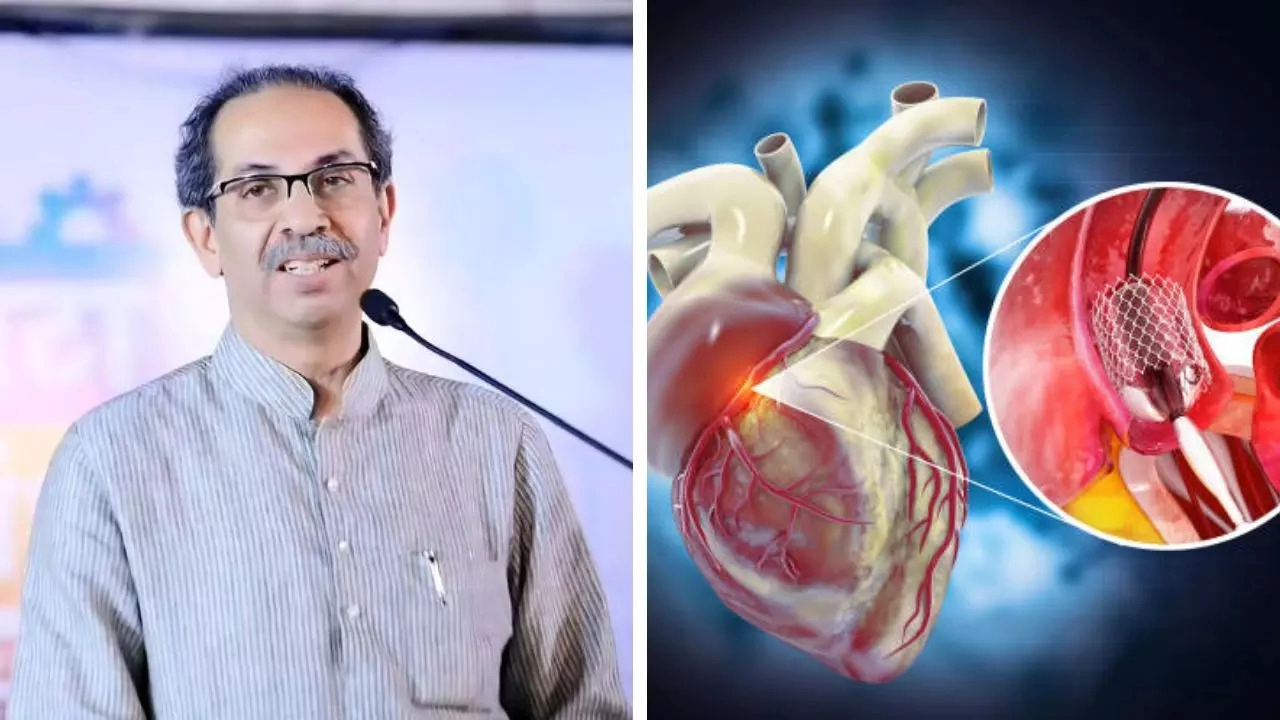Ashima Sharda Mahindra • 15 Oct 2024
Will Uddhav Thackeray Undergo Angioplasty In Mumbai? All About This Artery Blockage-Clearing Procedure

Thackeray has a history of angioplasty and may be undergoing angiography tests to identify blockages in his heart arteries
Uddhav Thackeray Hospitalized: Former Maharashtra chief minister and Shiv Sena (UBT) chief Uddhav Thackeray was admitted to the Reliance Hospital in Mumbai on Monday for a health check-up. News reports say Thackeray has a history of angioplasty and is currently undergoing tests to identify blockages in his heart arteries.
The 64-year-old politician underwent an angioplasty in 2012 after three of his arteries were completely blocked. The doctors then put in 8 stents to remove the constrictions for multiple blockages in three main arteries in his heart.
Also Read: Uddhav Thackeray Health
What is angioplasty?
Angioplasty, also known as coronary angioplasty - is a procedure to open clogged blood vessels of the heart. It helps treat vessels – known as coronary arteries, which deliver blood to heart muscles. A tiny balloon on a narrow tube called a catheter, is used to widen a clogged artery and improve blood flow.
Also known as balloon angioplasty – the procedure is minimally invasive in tight spots in arteries where plaque makes the space inside an artery too narrow or blocks it.
According to experts, those who have coronary artery disease or a heart attack may need to have coronary angioplasty.
How is angioplasty conducted?
For the procedure to be conducted seamlessly, doctors will put a catheter or tube through your skin into a blood vessel in your wrist or groin. They use medicine to keep you from feeling the tube go into your body. The catheter is then moved through your blood vessels to get to your blocked or narrowed coronary artery.
After reaching the problem area, the doctor will put in a wire and another catheter which has a tiny balloon at the end of it. After the balloon is inflated, it moves the plaque out of the way and off to the side of the artery wall, clearing the way for blood to get through. Your narrow coronary artery is like a crowded subway car with people blocking the aisle.
Then a small stent – a hollow scaffold made of metal is out inside your artery long after the angioplasty is done. Many stents have a drug coating that helps prevent your artery from getting too narrow again.
What are the advantages of angioplasty?
According to experts, the benefits of having an angioplasty done, include:
- It has less risk and a lower cost than a surgical procedure
- It causes only one wound from where the catheters are inserted
- The doctor can put in a stent during your angioplasty
Risk factors
Even though it is the most common procedure, and considered safe, a few risk factors associated with angioplasty include:
- A reaction to the dye
- Heart attack
- Abnormal heart rhythm
- Stroke
- Blood vessel or kidney damage
- Blood clots
- Chest pain
- Bleeding
- A repeat blockage
Get Latest News Live on Times Now along with Breaking News and Top Headlines from Health and around the world.